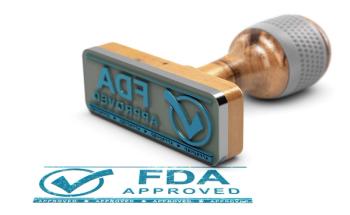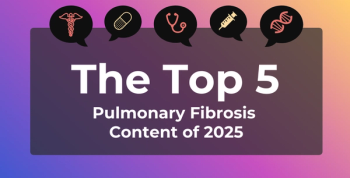
Fostering Interdisciplinary Communication: How Cardio-Renal-Metabolic Care Models Optimize Care Delivery
Viet Le, PA-C, Intermountain Health, gives insights into the benefits cardio-renal-metabolic care models provide for patients in need.
Viet Le, PA-C, Intermountain Health, shares his expertise with
Cardio-renal-metabolic models, care barriers, the role of value-based care, and more were explored at the
This transcript has been lightly edited.
Transcript
How do cardio-renal-metabolic care models integrate the management of comorbid conditions? What are the key challenges to consider here?
It's a journey that I've been on in terms of trying to build a cardiovascular-renal-metabolic model at Intermountain, because the problem is, we're siloed. Cardiology, of course, is its own specialty; nephrology, its own specialty; endocrinology, its own specialty. And I think the folks that end up kind of inherently being the CKM—that cardio-kidney-metabolic model—is primary care, but they're inundated. This is a very complex disease with a lot of things that are happening at the same time. We're in a space and time where there are so many therapies that we originally thought, “Well, this is a nephrology medication”—turns out to reduce cardiovascular events. “Well, this is a diabetic medication”—turns out it reduces kidney events and cardiovascular events. And so, you know, how do you do this?
This is the crux of it: the therapies that are coming out now are addressing the actual dysfunction at its core. So, I like to give the analogy of a dam. If the dam has water underneath it when it shouldn't, then you say, “Well, maybe we'll just kind of clean up the water.” And is that fixing the problem? It's not. That's very similar to addressing glucose, you, just lower your sugar. Well, that's the water. It's an end point. It tells us something's wrong. And most of therapies like insulin—maybe metformin, which has some things that I love and I don't love, and glipizide—really address the glucose. They don't address the dysfunction.
So now we're into an era with SGLT2 [sodium-glucose cotransporter 2] inhibitors, with GLP-1 [glucagon-like peptide 1] receptor agonists, and nonsteroidal MRAs [mineralocorticoid receptor antagonists] that are working to fix the dam where it's broken, where the dysfunction is. And it turns out, when you do that, you reduce cardiovascular events. So that's the key.
Here is when we think of CKM—of cardio-renal-metabolic. We need to get the band together. They're disparate, they're siloed, and we're working kind of at cross purposes. But I think the biggest piece that keeps CKM or cardio-renal-metabolic care from happening is territorial. We're worried and we think, “Oh, we don't want to step on someone else's toes. I shouldn't start this, because maybe nephrology will start it.” Turns out, we should really just focus on the patient in front of us, and if we are thinking about them, we'll start the therapies or address those issues that are upstream, that affect all of our specialties.
What role do multidisciplinary care teams play in improving patient outcomes within cardio-renal-metabolic care models, and how can coordination be optimized across these specialties?
The biggest problem is that when you're looking in communities, if it's an integrated health model like Intermountain Health—obviously, I'm kind of biased, because I work at Intermountain Health, but take any integrated system, and when you work on that model, we're talking through the same electronic chart. We are hopefully talking to each other through messaging one another. But when you look at a community that has multiple private care centers—it's not a bad thing, by the way, to have your own stand-up clinic and be private—but the problem is now you don't communicate well together. You're not using the same electronic chart. We're still faxing 40 pages, if the medical records clerk allows that to happen. It's really onerous on the patient and for the providers. So, allowing this collaboration really takes communication and it's harder when you have different private groups managing a single patient.
What I would suggest is that we need a way to bring that communication together. If EMRs [electronic medical records] aren't speaking, it probably has to be something that government pushes, because I don't think companies are going to push that. And for a while there we tried that. Here in Utah, it was called CHIE. It was the collaborative health information exchange. I don't know what happened to it, but it needs to occur. That will reduce duplicative exams, duplicative imaging tests, lab tests, etc. But it's communication, and it either happens through me calling my nephrology partners or endocrinology partners, which can be onerous, right? We texted today, that was nice, but I don't have everyone's number and that’s not secure enough for HIPAA [Health Insurance Portability and Accountability Act] type communications. We need to find a way to communicate with one another, but we need to get over the silo, the territory part.
So, if it happens to be a nephrology type medication, but has cardiovascular components, I need to be comfortable as a cardiology provider to be able to deliver that care, and then to message my nephrology partner to say, “Look, I started this. You can manage it, I can manage it, whichever one, but this is an appropriate therapy for this patient.”
How can we address barriers to adopting cardio-renal-metabolic care models? Are there any policies or frameworks could incentivize broader adoption?
Boy, it's a big thing in multidisciplinary care. So I realized I didn't fully address that in my last answer, but the part of the problem is the pay model. The pay model incentivizes us to keep patients and not really share with one another, because I get paid for visits, I get paid for interventions rather than get paid for care. So moving to a proactive model, which is what Intermountain is calling value-based care, makes a lot of sense, because in the end, it's the outcome that matters, not getting paid to do more to a patient. So care models where pay is incentivizing outcome will be helpful. That's where the ACA [Affordable Care Act] was helpful to kind of help, first bring EMRs into bear, but also how we interact with one another.
But this movement towards value-based or proactive care really will incentivize a multidisciplinary model, because people aren't trying to give sick care, which is, we get paid to do this thing, but we're now incentivized for outcomes. Because we got paid up front, we want to try to keep as much of that money to improve our clinics, to improve care, but also keep the patient from being hospitalized, from having to get a stent, from having to get dialysis. If we're incentivized for outcomes, then that multidisciplinary model makes a lot more sense, because now you can pay for advanced practice providers to help out. You can pay for clinic to be together without worrying about who's going to get the money for the echo, who's going to get money for the stent, who's going to get money for the dialysis? No, now we're getting paid to keep that patient healthy.
Newsletter
Stay ahead of policy, cost, and value—subscribe to AJMC for expert insights at the intersection of clinical care and health economics.







































